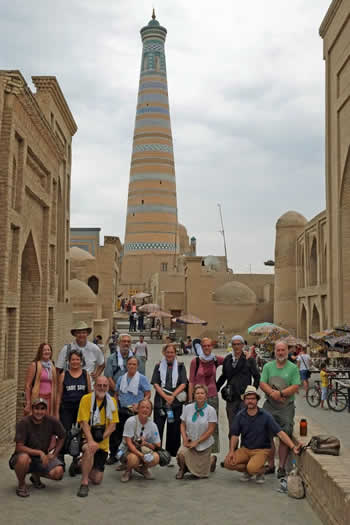
Last July, the Councils on African, European, East Asian, and Middle East Studies at the MacMillan Center hosted a one-week Summer Institute for Educators. Responding to popular demand, the four Councils agreed to offer a summer program on Worlds of Islam: Regional Perspectives on Unity and Diversity. Samuel Ross, PhD student in the Program of Islamic Studies in Yale’s Religious Studies Department, provided the relevant expertise and organized the sessions in close cooperation with Margaret Marcotte, Director for Outreach at the MacMillan Center. The two brought a number of leading scholars on Islam to the MacMillan Center, among them George Saliba of Columbia University, who spoke on astronomy in Islamic societies and how theories of planetary motions that were developed in Iran during the 13th century played a role in the Copernican revolution in Europe. Richard Bulliet, also a professor at Columbia University, spoke about the caliphate and its religious authority. Martin Nguyen of Fairfield University gave an introduction into Islamic theology, and Joseph Lumbard of Brandeis University, and a translator and editor of the forthcoming Harper Collins Study Qur’an, spoke about Islam’s holy book. Other presentations focused on Islamic feminism, Islam in Africa, and the history of Islam in medieval Europe (al-Andalus).
For the first time in many years, participants in the Summer Institute for Educators were given the chance to travel to a Muslim country with a Yale professor. In collaboration with GEEO.org, the Summer Institute offered educators to take part in a 12-day field trip to Uzbekistan, Heart of the Silk Road. Frank Griffel, Professor of Islamic Studies and Chair of the Council on Middle East Studies, took the group to Bukhara, Samarkand, and Khiva, three cities renowned for their beauty and the positions they held as centers of Islamic scholarship. They were also important stages on the Silk Road and prospered before the European discovery of the sea route to India and China in the late 15th century weakened this continental trade network. The group of twelve educators saw old madrasas (schools) in Bukhara and the famous Registan Square in Samarkand. They took part in a home stay in a village at the edge of the Qizilqum desert and saw one of the oldest Qur’an manuscripts in Tashkent, the capital of Uzbekistan. Having been introduced to Islamic astrology during the Summer Institute, they also saw the observatory of Ulugh Bey outside of Samarkand.
